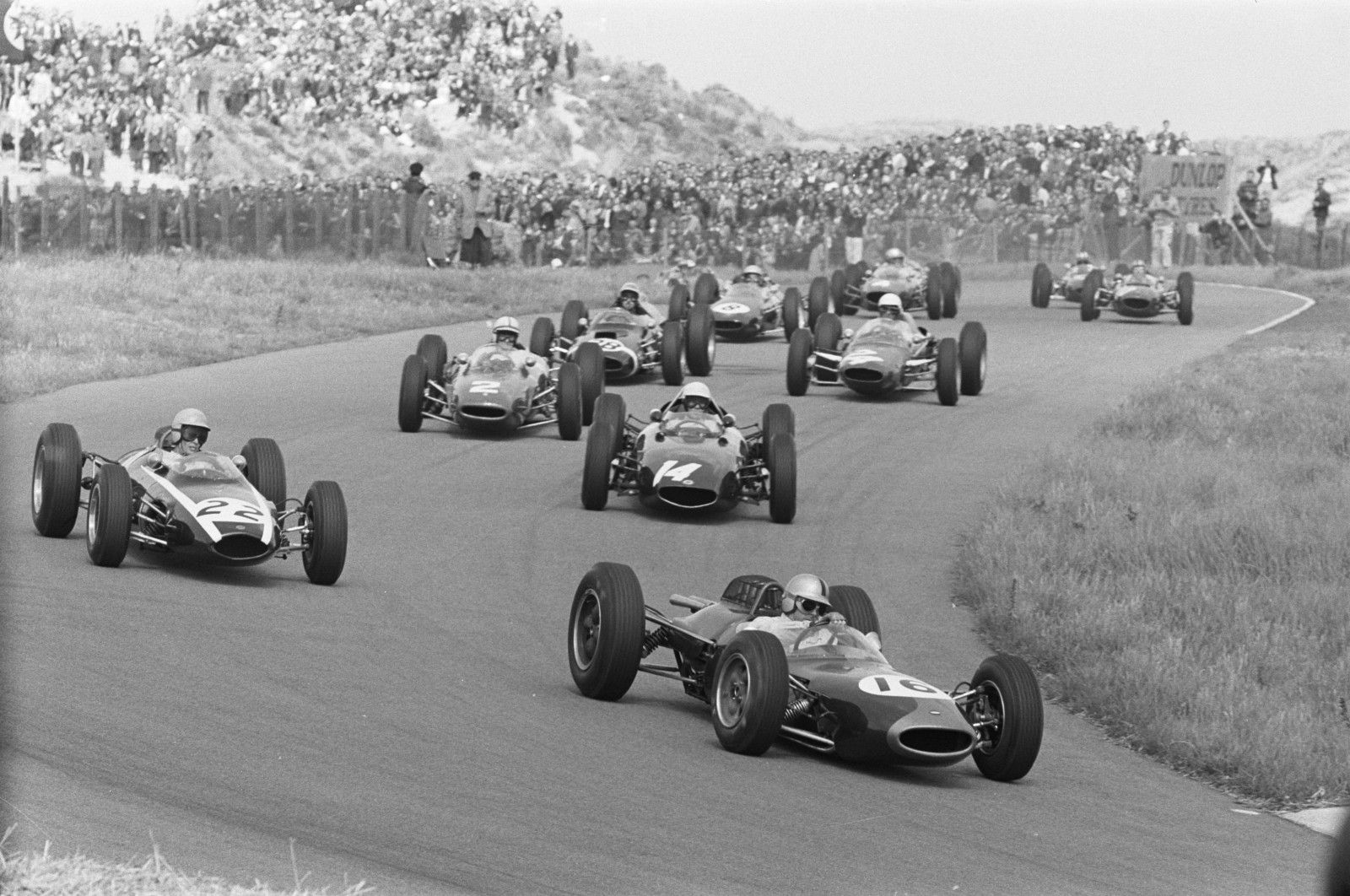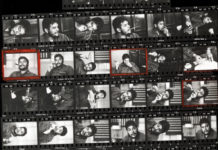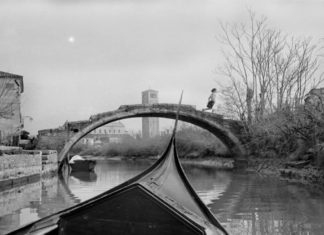In recent years, the role of the media and news has been pretty controversial. There has been a lot of turmoil regarding the trustworthiness of news outlets and their coverage of events. Photojournalism has always been a big part when it comes to the news coverage. Although the role of photojournalism has changed quite a bit, I believe it is still a vital and important part of the modern news. Furthermore, it also raises awareness of current global problems and presents them on a whole different level.

Description
As a short definition, Photojournalism is the telling of a story through photographs. Based on this simple foundation, is a complex genre that is struggling these days and fighting for its own legitimacy.
In its history, Photojournalism was important to tell all the untold stories of the world. Photojournalists traveled the world to give a voice to the unheard. Their pictures gave awareness to the struggle of people that were left alone otherwise.
A single picture in some cases was so powerful, that it changed the public opinion and also had a real impact on politics.
Photojournalism in its core is an objective way to educate people about the stories that the Photojournalist is covering.
With that goal in mind, Photojournalism continues the tradition of even older journalism that was using paintings or written stories. Through the technological advancement and improvement of photography, it became a more suitable and quicker medium to cover events.
Photojournalism is more immediate and a more truthful representation of reality compared to paintings, which were heavily influenced by the painter.

Telling a Story
Pictures of Photojournalism should have a meaning to the viewer. The meaning can be further explained by relevant captions and a description of the general context.
Nonetheless, there is the saying that a picture is worth more than a thousand words.
This is especially true for great pictures that are not only drawing in the attention of the viewer but are able to encourage to see the story behind the picture.
The story is what “sells” the photograph and conveys the emotion. It helps the viewer to connect with the protagonists and see further than what is clearly visible.

There are different styles when it comes to telling a story in Photojournalism. Some photojournalists prefer to work on complete series and projects. Rather than having a single image that tells the story, they like to develop a story throughout the series of their pictures.
Sometimes, photojournalists also write the accompanying text themselves.
As You can see, a photojournalist is more than a photographer. He is not only there to picture the scene, he is a storyteller. Not only through the picture itself, but also with the help of written text.
Purpose of Photojournalism
The goal of photojournalism is to show the world and its stories to the average person in this world. Long before rolling film and the television as a medium where established, it was very difficult to find information on current events or stories about other parts of the world.
There were newspapers, but written text alone isn’t that engaging and in a way not as easily accessible as pictures. When reading about these stories, there is a lot of room up for interpretation and it demands a heavy involvement of the reader.
A photograph, on the other hand, can be understood by everyone. The best photojournalistic photographs take people to different places and the viewer is able to relive the events, that unfolded in front of the photographer.
Though its original purpose has very good intentions in showing an unfiltered world, to the persons that are not able to travel themselves, we also have to account, that from its very beginning, photojournalism has been used to propagate certain opinions or views.
In fact, the first professional photojournalists were only able to do their work, because they got paid by the government to narrate a story that fits their agenda. In most cases, it was to promote a war and its causes. Of course, the war wasn’t shown in its full detail. Rather, the published pictures were a very filtered version that glorified war and kind of painted a romantic vision of it.
In an ideal world, rather than being dependent on the government and its financial support, photojournalists would be an additional force to keep the government in check. The photojournalists present the real impact of their decisions and help to educate the voters about the actions of their representatives.

Ethics in Photojournalism
Photojournalists often travel to conflict zones, disasters or other areas that are struck by misery and misfortune. Traveling to these areas with the purpose of taking pictures opens up a lot of questions regarding the ethics of photojournalism.
Often times, photojournalists are accused to exploit the distress of others, to benefit for themselves, rather than helping them directly. Although the photojournalists may not be directly helping the individual, I strongly believe that the photographs are still one of the most powerful mediums to raise awareness and indirectly help the people in need.
It does seem a bit harsh, but without these pictures and the impact they are enforcing, the rest of the world would never hear their stories. Without being aware of the suffering, there would be little interest in changing their situation and helping them.

News articles also don’t have the same impact without some accomplishing photographs. To be really affected by the suffering of others, we need to see the immediate situation. Emotions are the strongest instrument in addressing people that are able to help.
To address politicians that are able to intervene and the population to raise money. Putting the people that are suffering on a display might not be the most ethical thing, but it is the most effective way to bring attention to their dire situation.
Working in an emergency area requires the photographers to be aware of the ethical conflicts they are facing. They need to have a strong mindset to not be let down by their own emotions, when in the middle of a conflict zone and to be able to deliver great photographs. In addition, they need to be aware of the backlash that they might be facing, either by the public opinion or by some political groups, that disagree with the image that the photojournalist is sharing.
Rules in Photojournalism
Photojournalism can have a real impact on politics and the public view. Therefore it comes with a lot of responsibilities.
One of the earliest works in photojournalism that portrayed the housing situation in New York, lead to an improvement in the regulation of the apartments.
There are a lot of rules attached to photojournalism when it comes to the best practice. Apart from the typical rules in photography to create compelling pictures, photojournalism has its own set of rules, to enforce their legitimacy and establish trust.
Photojournalism should always be seen as the objective view. With the photographer having an active influence on the scene, it is obvious that there is always a subjective view to a degree.

To establish this objective view, there are a few rules that should be followed in photojournalism.
Here You can see 10 principles of photojournalism that are stated by a US university. To make it short, I filtered out the photography related ones and focus on the rules, that are more about the moral of photojournalism.
Identify Your subjects
In Street Photography, it doesn’t matter who Your subjects are or what their background is. What is more important is the single picture and which story it tells. It isn’t important if the story reflects the real situation or does tell something that hasn’t been there. Street Photography is not about the objective truth, it is about telling a story and the subjects are only anonymous props.
In Photojournalism, there is a different standard. The story that is told should be as close to the objective truth as possible. If a person becomes the main subject in a photojournalistic work, then it becomes increasingly important to know their name. The name does add some legitimacy to the picture and the story that it tells. In addition, the photojournalist should also ask for more background information. This helps to understand the context of the photograph and the people that are in it.
Be Candid
Photojournalism is about telling real stories. Those stories can be told the easiest when the photographer simply captures what is happening in front of him. Obvious posing or re-enacting is something that should be left to Hollywood.
A photojournalist should aim to get his pictures candidly and if he needs a posed portrait for a series, he should state that the photograph is not candid.
Have Guts
To get unique pictures, the photojournalist has to enter a world, that would leave most people too afraid to enter. He has to have the guts, to overcome his own fears and get close to his subjects. Not be afraid of any repercussions and be determined to tell an outstanding story.
Aside from these principles, there are also other rules of photojournalism that have been established to keep the credibility of the photographs.
Post-Processing in Photojournalism
One of the most important rules is that photo manipulation should absolutely be avoided. Since the pictures are meant to show real scenes, any manipulation does break this goal.
The more difficult part is to determine which kind of post-processing already can be coined as manipulation. No picture, whether today or even in the film era is 100% pure. They are all edited in some way or another. Sometimes it is just a different crop and other times there is a little dodge and burning. Those are very basic editing techniques and don’t really change the content of the image, but rather the appearance.
The line is clearly overstepped when the picture has been manipulated in a way that it does affect the content. For example, if You are using the clone & heal tool, even if it is just to brush away some dirt, or unpleasant objects in the background.
Steve McCurry has manipulated his images in this way and since then he acts as a “visual storyteller” rather than a photojournalist who tries to show the true life abroad.
To not risk any manipulation allegations, keep the post-processing minimal and rather try to get the image perfectly in-camera.

Recent Tendencies
If You are following the news, there has been a change in how photojournalism is perceived and how it does reach the news. Although one could argue, that this has been going on since the beginning of photography, photojournalism is often misused and instead of trying to show the objective truth, it is often a booster to push one’s agenda.
This misuse and propaganda style spread of these pictures isn’t new. What is new is, that the content doesn’t even really matter and that the visuals of the images are more important than their message.
Instead of presenting a story, news outlets are out hunting for the most dramatic and emotional pictures. Again, this is not to say that this has been going on forever, but it has reached an extreme, that it is very difficult to take the news seriously nowadays.
They are more focused on creating the most buzz, instead of informing people.
The Internet and additional sources of information might have facilitated this trend, as it puts some added pressure on the established news outlets. On the other hand, the Internet also offers some other sources of photojournalism.
I doubt that this trend can be stopped and the news will always be going for the more extreme and emotional stories, rather than trying to portray some objective information.
Nonetheless, Photojournalism is still very alive. It is different and not so much positioned in the mass media as it was some decades ago. The purpose also has shifted slightly. Has photojournalism been more focused on spreading information, photographers are more focused on the story part when creating a complete series.
Read also this great article about the change in Photojournalism.
Sources of Photojournalism

Since I find it more difficult to find serious and good photojournalism on most “traditional” news outlets, because they are rather trying to appeal to the emotional side of things instead of spreading objective information, I want to present some sources where You can see complete bodies of work in regards to photojournalism.
Of course You have to accept that these sources will never be 100% free of any opinion and that they are trying to portrait some sort of message, nonetheless, I find them to be of very high quality and interesting.
Lensculture.com
When I started with Street Photography and also became more interested in discovering Photojournalism, Lensculture was my favorite place to have a look at the best photo series that are happening right now.
They still are one of my favorites, but recently they are starting to become more commercial. Recently, they are very heavily promoting their own awards and are collaborating with Magnum very strongly. I am not really fond of these kinds of collaborations because it is nothing but a money sink for 99,9% of the photographers and even in case You are winning, there is not much to gain.
So if You can ignore all the “Call for entry” kind of articles, then there are still great stories to be discovered.
Reuters.com
As one of the last traditional news sources that also employs Photographers directly, they often are cited as the main source of information.
In my opinion, they are doing a fantastic job and are one of the least “sensationalism” news sites, but rather are focused on providing accurate news.
If You are curious about their photographers, You can have a look at them here. The photographers are spread around the world and the immense amount of photographers that are employed by Reuters helps to work on long-term series rather than quick emotion driven news.
Magnum Photos
In addition to news outlets, there are also some photography collectives or agencies focused on long-term projects. The best-known one is Magnum Photography.
On their website, You can have a look at their great portfolio that they have collected since their beginning in 1947.
If You are curious, You can also find some photography books.
Noor Images
The second big collective that is dedicated to photojournalism is Noor Images.
On their website, You can find regular updates on their current projects and completed series. You can also witness where the photographers currently are and on which projects they are working.
This can be some interesting insight into the work of a photojournalist.
World Press Photo Award
In my list of photojournalism examples, I have displayed the work of the World Press Photo Awards. What is so great about them is that they are not focused only on social Documentary, but also include other topics likes Sports or Nature Photography.
Those are also very often overlooked when speaking about photojournalism.
Final Remarks
Photojournalism might not be in the great spotlight anymore compared to the early 20th century, where there weren’t many sources of information. Photojournalism was a medium, that was able to convey the stories of the world much more directly than any written news article was able to.

Through Photojournalism, people got direct access to these events and didn’t rely on an author.
Photographs are a much more direct source and ideally, they are also more objective.
Although the recent trend for more sensational photographs in news doesn’t promote the true meaning of photojournalism, it doesn’t mean that this genre is less important or on a decline. It has changed and rather than presenting pure information, Photojournalists are becoming more like visual storytellers themselves.
I hope this answers Your question:”What is Photojournalism” and shows the importance of this genre.






























